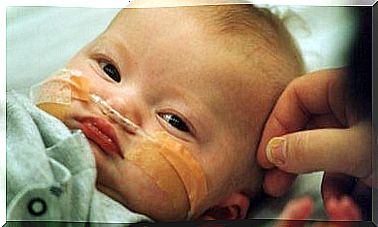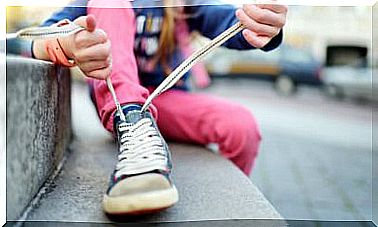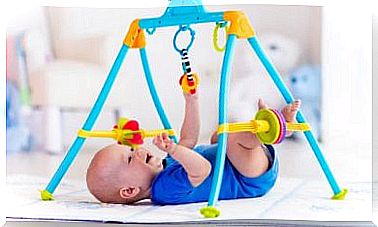Postpartum C-section Scar Care

Cesarean scar care is simple, but it must be done carefully to allow for optimal recovery. During healing, it will be crucial to prevent infections and monitor for any bleeding or openings.
Below, we’ve summarized some practical advice for caring for post-partum cesarean scarring and improving healing.
The evolution of cesarean scar after delivery
When Mom leaves the operating room, she will see that the scar is covered with a surgical dressing. During the first few weeks, it is essential to constantly monitor the healing process to check that there is no bleeding or opening. It will also be important to change the dressing to avoid contamination.
After a few days, the scar will no longer need to be constantly covered. In general, any wound or scar dries and heals more quickly when uncovered. Bandages generate a concentration of moisture that can favor the proliferation of various microorganisms and pathogens.
In a normal evolution, this scar should not show relief and its predominant tone will be pink. However, about 5% of women develop keloids during recovery from childbirth. Keloids are characterized by an abnormal growth of scar tissue and are more common among dark-skinned people.
Therefore, every woman’s postpartum healing must be properly monitored by her trusted physician. The trained professional can discover the formation of keloids and propose a treatment to improve the appearance of the scar.
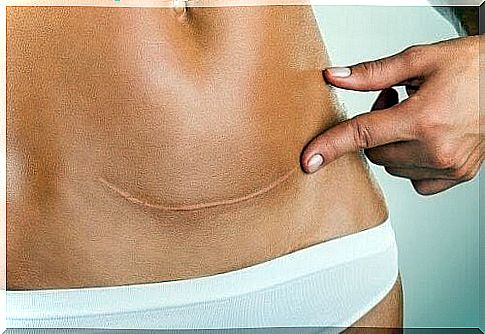
Preparing the skin during pregnancy makes postpartum care easier
To facilitate caesarean scar care and prevent keloids, it is advisable to prepare the skin during pregnancy. The ideal is to apply an excellent quality moisturizer or aloe vera, to improve the skin’s elasticity. This will prevent the skin from becoming dry and will provide better healing after the cesarean.
Feeding during pregnancy should also aim to improve the quality of the skin. A pregnant woman should have an excellent supply of protein and enhanced hydration. Furthermore, the consumption of fruits and vegetables will be essential to strengthen the immune system and prevent constipation.
Cesarean scar care: daily hygiene
Daily cleaning of the cesarean scar will be crucial to eliminate any impurities and prevent infections. To wash it, we should only use warm water and mild soap and make very gentle movements. Soaps with perfumes, exfoliants or antibacterials should be avoided as they can irritate the skin.
After washing the scar and rinsing it with plenty of water, it is essential to dry it thoroughly. This is because moisture facilitates the proliferation of bacteria and other pathogens. To get a good drying, the ideal is to use a clean gauze and make soft “touches” on the scar.
During bathing and drying, it is important to avoid sudden movements or strain on the abdominal muscles. Any impact or effort made in this region can impair healing.
Leaving the wound outdoors accelerates healing
Covering the wounds creates a humid microclimate in the region which, in addition to facilitating the proliferation of microorganisms, makes healing difficult. The longer we can leave the scar from the C-section outdoors, the quicker and easier the recovery will be.
However, if we have to go out and the contact with the clothes causes discomfort, we can make a simple dressing using gauze and hypoallergenic tape.
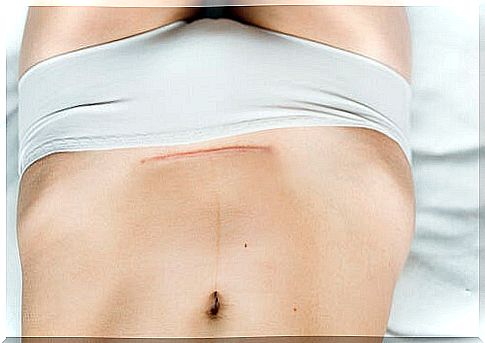
Prefer soft and cotton clothes
During the healing process, it is recommended that women wear light and soft clothing, preferably cotton. Thick fabrics do not allow body perspiration, which can generate moisture in the abdominal region; as a result, the scar is exposed to a large number of microorganisms.
If temperatures are too low, we can use a piece of cotton to get in contact with the scar and wrap ourselves up later. Most importantly, the tissue that is in contact with the skin does not interfere with healing or provoke an allergic reaction.
Each woman is a unique being and the owner of a unique organism. For this reason, care for the cesarean scar should take into account the specific needs of each mother and her own body. Medical follow-up will be essential to establish recovery guidelines and guide the healing process.
